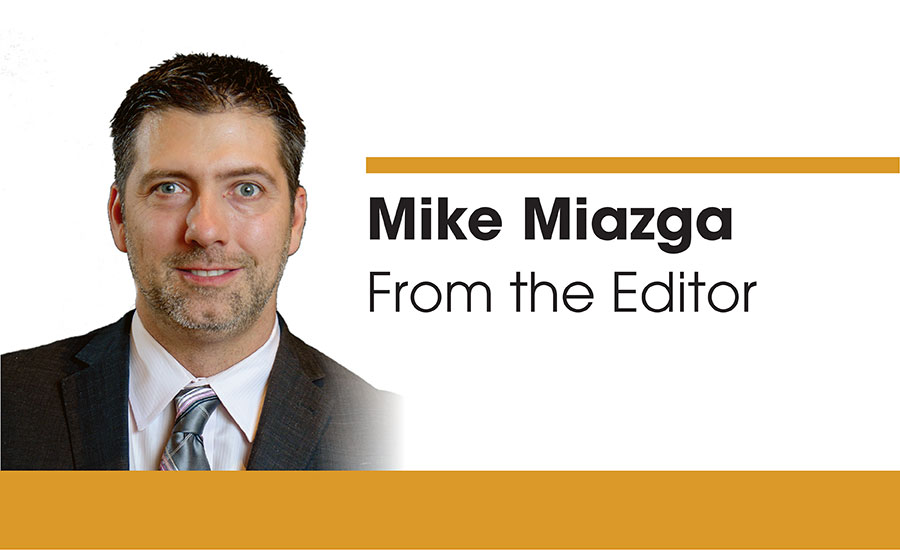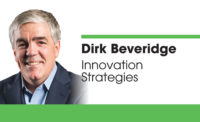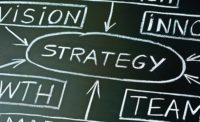Network2015 in Chicago is right around the corner, which means the education opportunities will be abundant.
Whether comparing notes with an industry peer from another corner of the country or taking away new knowledge and strategies from one of the many speakers in attendance, Network2015 has something for everybody interested in taking their business to the next level.
Last month, I enjoyed an educational bonanza at a variety of industry events. I met two companies in particular that think outside the box with one branching into fields outside traditional PHCP-PVF distribution and another who helps its contractor customers improve back-office practices.
Those would be two examples that fall under the innovation umbrella. And speaking of innovation, I attended Dirk Beveridge’s fourth annual UnleashWD summit in Chicago in mid-September where in two days the 100 or so attendees heard from 15 speakers who made it crystal clear: If you aren’t willing to change and think outside that box in today’s times, your business is likely in for a world of hurt.
A variety of innovative ideas consistently flowed during the summit. Presenter Larry Keeley (Doblin Inc.) asked how many people play or know someone who plays the smartphone-based Candy Crush game. A good number of hands went up. Then Keeley put up a slide, revealing the game makes almost $1 million a day in revenue. The former No. 1 player in that category (Angry Birds) now makes about $11,000. Someone had an innovative idea and ran right to the bank with it.
Or there is the story of Colin Hunter, founder of the Alton Lane men’s clothing line. Alton Lane stores only allow one customer in at a time — private by-appointment clothes fittings. He’s further upping the ante with innovations such as a 31-ft. mobile showroom, house calls and even clothes fittings on a yacht — all designed to best serve the company’s customer base.
While coming up with the next ideas that will push business forward is great, many of the speakers pointed out change can’t occur unless the right people are in place and those people are engaged in their work.
“Change is hard and people are naturally resistant,” says Donna Peeples, former AIG executive, founder and CEO of Motivated, and one of the UnleashWD speakers. “Managing change of any kind is much like a political campaign. You have to be out there shaking hands and kissing babies to inspire people throughout the organization.”
Assurance, a suburban Chicago-based business insurance company, improved its employee engagement and watched the company’s fortunes skyrocket. Something as simple as reducing the price of soda in the vending machines to a quarter played a part in the company better connecting with its employees. “Engaged employees have a direct correlation to efficiency and profitability,” Assurance Chief Marketing Officer Steven Handmaker says.
Handmaker, who spoke during the first day of UnleashWD, cites a Gallup study that shows 69% of employees are currently not engaged in their work. Within that same Gallup data, engaged work groups are 18% more productive, 16% more profitable, have a 2.6 times higher growth rate and are 62% less likely to be involved in on-the-job accidents.
Assurance cites five pillars it employs to drive employee engagement: flexibility; opportunity and recognition; giving back; connecting; and work life.
Flexibility at Assurance is as simple as offering telecommuting options, as well as summer and flex hours. The company CEO connects by calling each employee on his or her birthday and anniversary. Card racks are set around offices so employees can write notes to each other or to customers.
The results? Staggering. Assurance’s revenue jumped from $7 million in 1998 to $67 million in 2013. Employee satisfaction rose from 50% to 95% during the same timeframe and referral hiring went from 33% to 61%. “There is great value in an engaged workforce,” Handmaker says.
Now is the perfect time for companies in our industry to differentiate themselves through the implementation of forward-thinking ideas and strategies.
But before you put those plans of change into motion, take a hard look at your workforce. Are your employees engaged in what they do for you? If you are closer to that 50% in employee satisfaction, please develop a plan to change that.
Without employee engagement, positive change isn’t going to happen.





